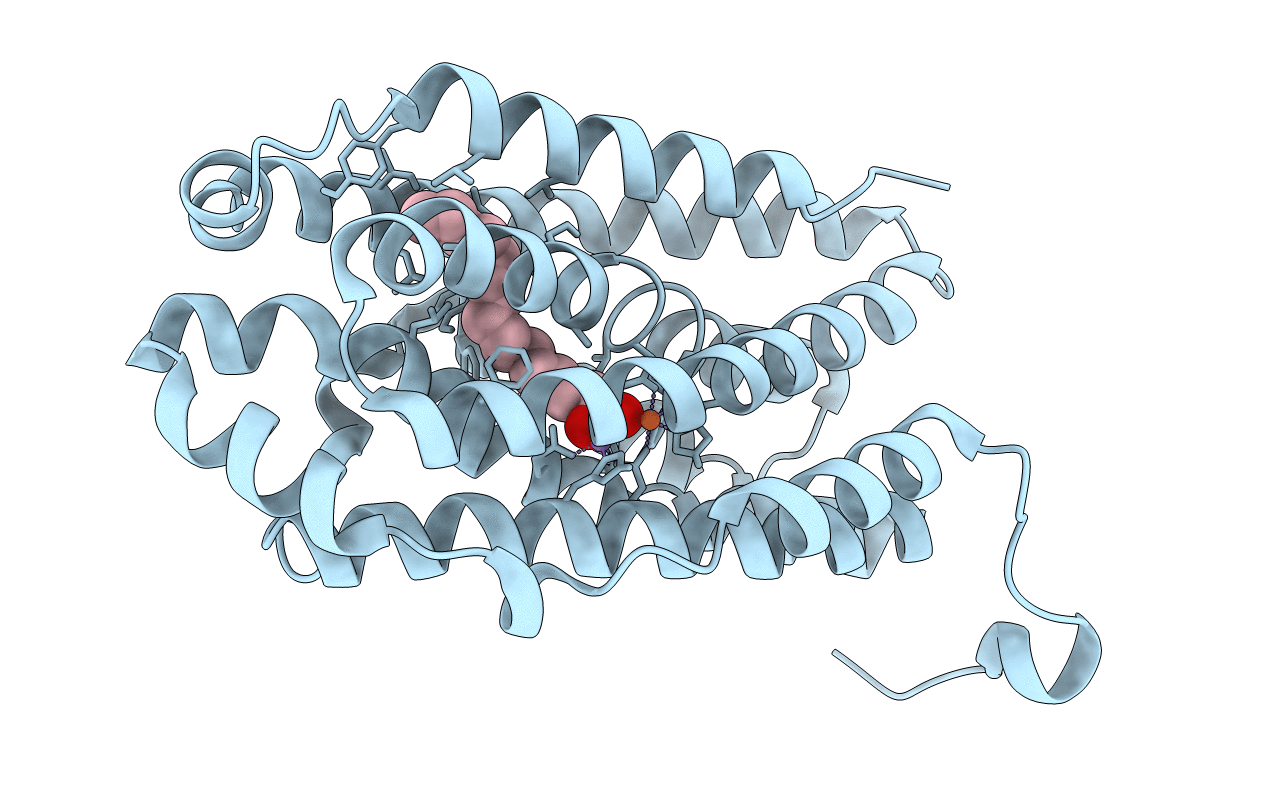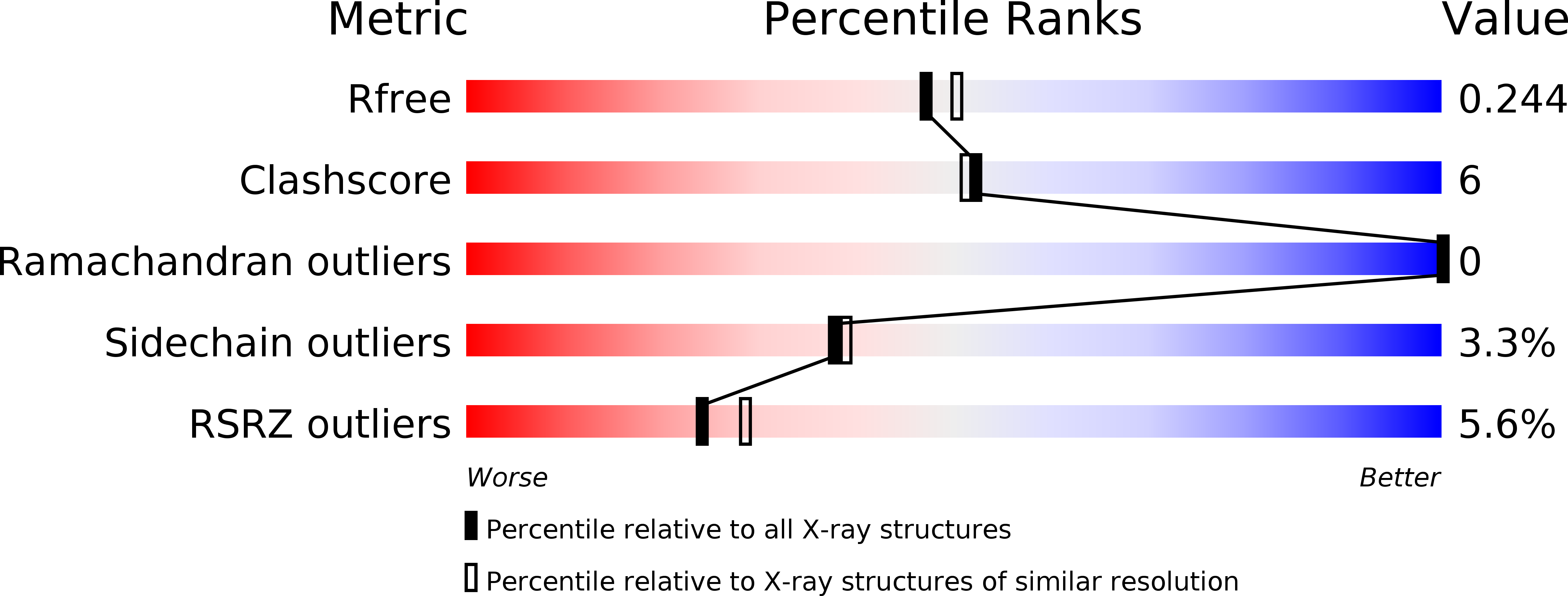
Deposition Date
2015-11-03
Release Date
2016-04-27
Last Version Date
2024-01-10
Entry Detail
PDB ID:
5EKB
Keywords:
Title:
R2-like ligand-binding oxidase with aerobically reconstituted Mn/Fe cofactor (reconstituted in solution)
Biological Source:
Source Organism:
Geobacillus kaustophilus (strain HTA426) (Taxon ID: 235909)
Host Organism:
Method Details:
Experimental Method:
Resolution:
2.07 Å
R-Value Free:
0.24
R-Value Work:
0.18
R-Value Observed:
0.19
Space Group:
I 2 2 2


